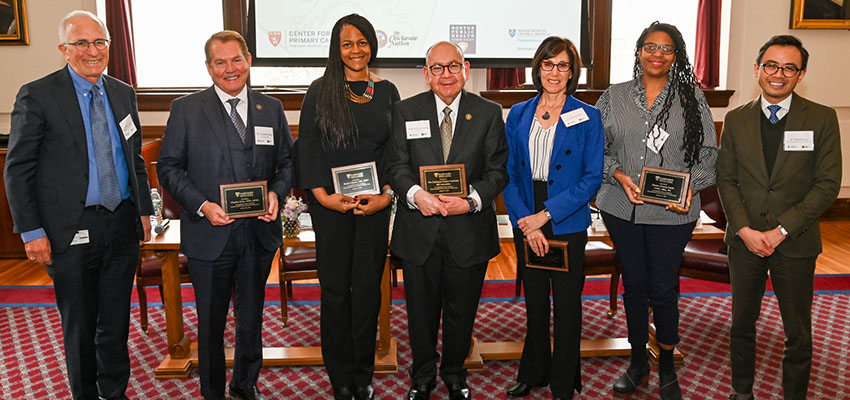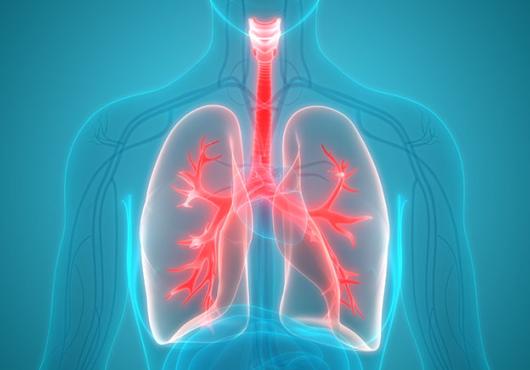
From the heartland of America to the heart of Boston, medically underserved communities across the country have needs and struggles that are at once shared and unique.
On Jan. 18, the Harvard Medical School Center for Primary Care hosted a symposium to amplify voices and facilitate discussion around community collaborations to achieve equitable health care access in seemingly disparate communities like Boston and the Chickasaw Nation.
“While every community is different, there is much that we can learn from each other,” said David Duong, director of equity, access, and advocacy at the Center for Primary Care and an instructor in global health and social medicine at HMS.
“The most important part of addressing a community’s need is listening,” he added.
The symposium, Leadership and Health Care Transformation in Medically Underserved Communities, convened speakers from the Chickasaw Nation, the National Association of Community Health Workers, the Boston Public Health Commission, and a former advisor at the U.S. Department of Health and Human Services. The audience included Harvard faculty, staff, students, and community members.
Event organizers were “excited to bring together a diverse group of leaders who have made health equity their life’s commitment,” said Russell Phillips, director of the Center for Primary Care and the William Applebaum Professor of Medicine and professor of global health and social medicine at HMS.
Improving the health of Native Americans
Chickasaw Nation Governor Bill Anoatubby explained in his keynote remarks that the tribe’s mission to enhance overall quality of life for its citizens has translated to increased health care access and greater attention to the social determinants of health that affect the majority of health outcomes.

The Indian Health Service reports that American Indians and Alaska Natives born today have a life expectancy 5.5 years lower than the U.S. all-races average. According to the Centers for Disease Control and Prevention, Native people have higher rates of diabetes and lung, colorectal, liver, stomach, and kidney cancers than non-Hispanic white people in the U.S.
Anoatubby, who served as the first health director of Chickasaw Nation, described how the Chickasaw Nation made a compact with the Indian Health Service in 1994 to administer the tribe’s health care. Since then, new facilities have been built with enough capacity that other Native people have access, he said, representing a success in community health work.
“Under the leadership of Governor Anoatubby, we have developed more than 200 community programs for Chickasaws, which directly and indirectly improve the health outcomes of Chickasaw citizens,” said panelist Charles Grim, who is secretary of health for the Chickasaw Nation and a former director of the Indian Health Service.
Anoatubby said his approach to challenges in health care access uses a method he learned from his community.
“Since time immemorial, Chickasaws have faced challenges head-on and adapted to changing circumstances … with determination and perseverance,” he said.
Anoatubby encouraged listeners to work toward a future that they may never witness but that will shape the lives of generations to come.
“The impact of our actions often stretches beyond our immediate vision,” he said. “Our ancestors laid the foundations for our future, making sacrifices and taking steps whose benefit they knew they may never see themselves. This is the essence of true leadership and service.”
Sustaining effective solutions in Boston
Symposium panelists shared stories from working in their own medically underserved communities.
Although Boston is home to world-renowned health systems and medical schools, marginalization prevents many people in nearby neighborhoods from accessing them. Bostonians’ life expectancy can vary by as much as 23 years depending on which neighborhood they live in, according to a 2023 report from the Boston Public Health Commission, an independent agency that works to address health inequity and other issues.
Panelist Bisola Ojikutu, executive director of the commission and HMS associate professor of medicine, part-time, at Brigham and Women’s Hospital, said that people underestimate the ability of community-based organizations and community residents to develop their own solutions to the challenges that persist and drive inequity.
“What communities lack is the resources and the infrastructure to sustain effective solutions,” she added. “This is a commonality across rural and urban settings.”
Judith Steinberg, one of the panelists and a former senior adviser to the assistant secretary of health at the U.S. Department of Health and Human Services, agreed with Ojikutu’s comments, noting that while the federal government is an important facilitator of health care delivery, it does not act alone.
“Collaboration is so important to bring partners together — we’re talking about the communities, providers, academia to improve the health and well-being of our people,” she said.
Emphasizing the need for everyone’s voices and stories to be heard, panelist Denise Octavia Smith, executive director of the National Association of Community Health Care Workers, said, “Listening is where we started and where we’ll end.”



